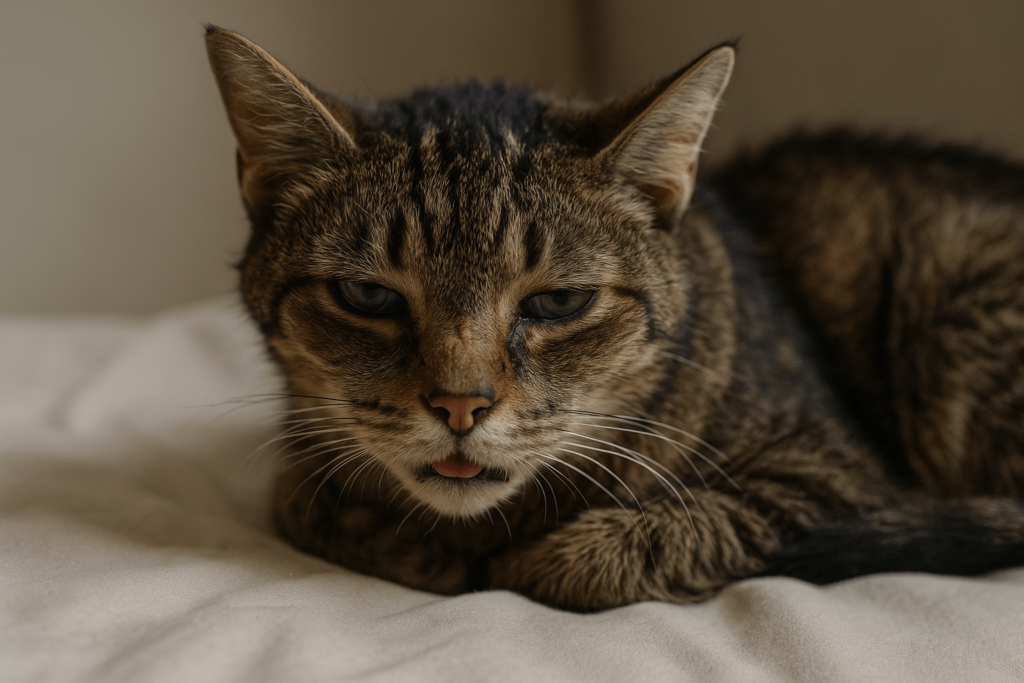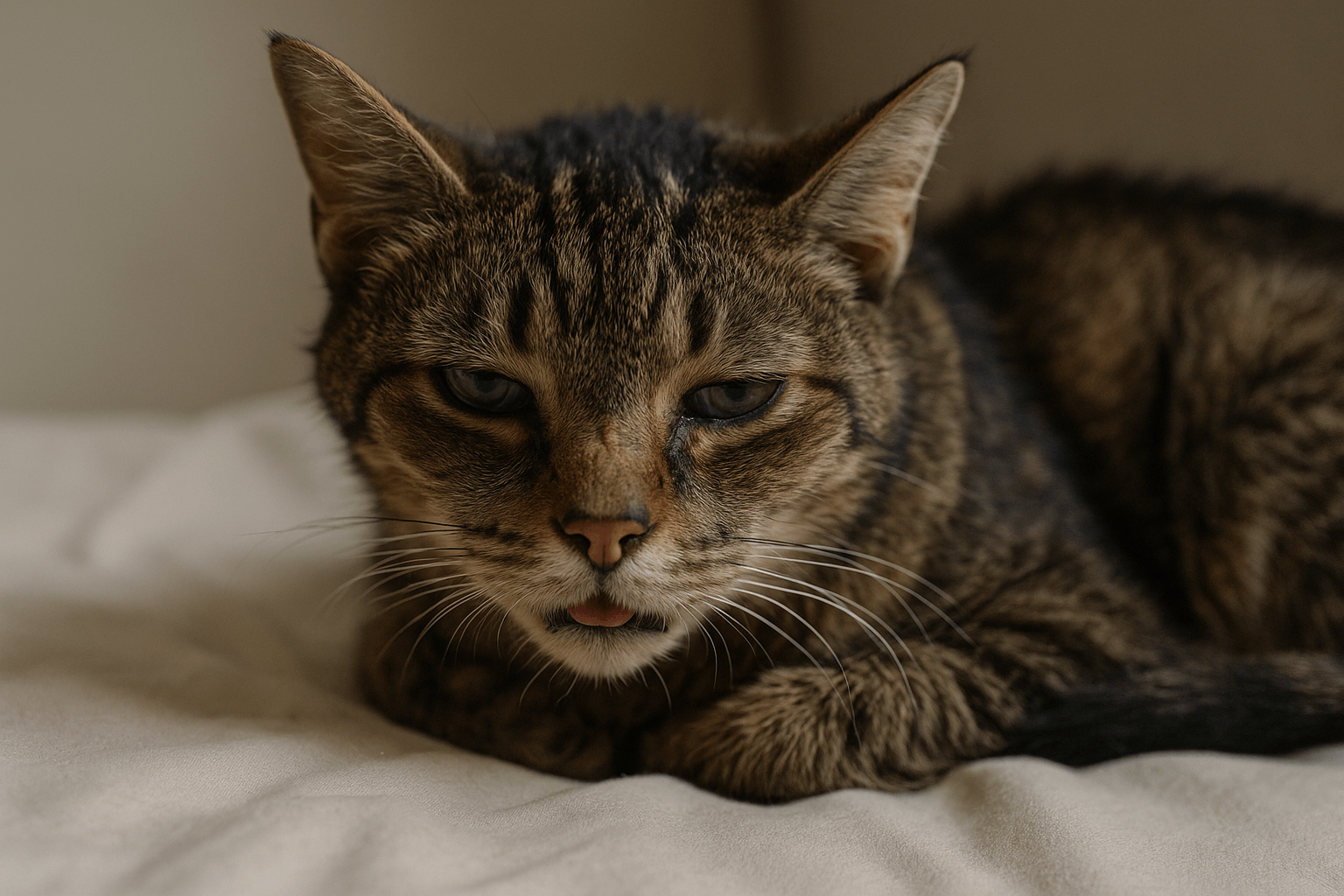Hypoglycemia in Cats: Recognizing the Silent Danger Before It’s Too Late
A cat lying still, unresponsive, or trembling might look like it’s just napping—but it could be fighting for its life. Hypoglycemia, or dangerously low blood sugar, is a medical emergency in felines that often goes unnoticed until it’s advanced. Unlike dogs, cats are especially vulnerable due to their unique metabolism. This isn’t just about missed meals—it’s about a hidden physiological crisis that demands immediate awareness. Understanding hypoglycemia in cats could mean the difference between life and death.
Why Hypoglycemia Is a Critical Threat to Cats
Cats have a narrow metabolic window when it comes to glucose regulation. Their bodies rely on a constant, steady supply of energy—and when that supply drops, the consequences are swift and severe. Here’s what you need to know:
Cats Lack Glycogen Reserves:
Unlike humans or dogs, cats cannot store large amounts of glucose in their liver, making them prone to rapid drops in blood sugar.High Protein, Low Carb Diet Dependency:
As obligate carnivores, cats metabolize protein and fat for energy—not carbohydrates—so skipping meals disrupts their natural fuel cycle.Insulin Sensitivity:
Even small overdoses of insulin in diabetic cats can trigger a dangerous plunge in glucose levels.Stress and Illness Amplify Risk:
When a cat is sick, its body burns through glucose faster while simultaneously reducing intake—creating a perfect storm.Kittens and Senior Cats Are Most Vulnerable:
Their developing or aging systems lack the resilience to compensate for glucose fluctuations.
Ignoring these biological realities puts your cat at risk. Hypoglycemia doesn’t announce itself with loud symptoms—it creeps in quietly, and by the time you notice, it may already be too late.

Common Causes of Hypoglycemia in Cats
Low blood sugar rarely occurs without an underlying trigger. Identifying the root cause is essential for prevention and treatment. Here are the most frequent culprits:
Diabetes Mellitus Overdose:
Administering too much insulin—or giving insulin without adequate food—is the #1 cause of hypoglycemia in adult cats.Missed or Inadequate Meals:
Even one skipped meal can trigger hypoglycemia, especially in small, young, or sick cats with high metabolic rates.Liver Disease:
Conditions like hepatic lipidosis or portosystemic shunts impair the liver’s ability to release stored glucose.Pancreatic Tumors (Insulinomas):
Rare but deadly, these tumors overproduce insulin, causing persistent and uncontrolled drops in blood sugar.Severe Infections or Sepsis:
Illness increases glucose consumption while suppressing appetite, leading to rapid depletion of energy reserves.
Every case of hypoglycemia is a red flag. It’s not a standalone condition—it’s a symptom of something deeper. Recognizing these causes helps you act before your cat collapses.
Check this guide 👉Understanding Cat Blood Sugar Levels: Best 7 Expert Tips!
Check this guide 👉What is Dangerously High Blood Sugar for a Cat? Best 7 Tips!
Check this guide 👉Understanding Cat Blood Types: Best 7 Health Tips!
| Risk Factor | Why It Triggers Hypoglycemia |
|---|---|
| Diabetic cats on insulin therapy | Even slight miscalculations in dose or timing can cause glucose to plummet. |
| Kittens under 12 weeks | Small body size and immature glucose regulation systems can’t sustain energy between meals. |
| Chronic kidney disease | Reduced appetite and increased metabolic stress drain glucose faster than it’s replenished. |
| Hepatic lipidosis (fatty liver) | The liver can’t convert stored fat into glucose, starving the body of energy. |
| Severe stress or trauma | Stress hormones increase glucose use while suppressing appetite, creating a dangerous deficit. |
Early Warning Signs You Can’t Afford to Ignore
Hypoglycemia progresses quickly. The earlier you spot the signs, the better your cat’s chances. These symptoms start subtle—but they escalate fast.
Lethargy or Unresponsiveness:
Your cat may seem unusually sleepy, weak, or disoriented—like they’re “in another world.”Trembling or Shaking:
Involuntary muscle tremors, especially in the legs or head, signal neurological distress from low glucose.Loss of Coordination:
Stumbling, wobbling, or inability to stand are signs your cat’s brain isn’t getting enough fuel.Loss of Appetite or Refusal to Eat:
A sudden disinterest in food—even their favorite treat—is a major red flag.Seizures or Collapse:
In advanced stages, hypoglycemia can trigger convulsions or unconsciousness—this is a life-threatening emergency.
Don’t wait for seizures. If your cat is acting “off” and seems weaker than usual, treat it as urgent. Time is glucose—and glucose is life.
What to Do If You Suspect Hypoglycemia Right Now
If your cat shows signs of low blood sugar, every second counts. Follow these steps immediately:
Do Not Wait:
Hypoglycemia can lead to brain damage or death within minutes if untreated.Apply Honey or Corn Syrup:
Gently rub a small amount (1–2 teaspoons) on the gums, under the tongue, or on the inside of the cheek. Do NOT pour it down the throat—risk of choking.Offer Food If Conscious:
If your cat is alert and able to swallow, offer a small amount of wet food or a high-calorie paste like Nutri-Cal.Call Your Vet Immediately:
Even if your cat improves after sugar, they need veterinary evaluation to identify the cause and prevent recurrence.Avoid Giving Insulin:
Never give insulin if you suspect hypoglycemia. You could push them into a fatal coma.
This isn’t a “wait and see” situation. Immediate action saves lives. Keep honey or corn syrup in your pet emergency kit—just like you would for a child.
How Veterinarians Diagnose and Treat Hypoglycemia
Once at the clinic, your vet will act swiftly to stabilize and diagnose. Here’s what to expect:
Blood Glucose Test:
A rapid finger-stick test confirms if glucose levels are below 70 mg/dL (normal range: 80–120 mg/dL).Full Blood Panel:
Tests for liver, kidney, pancreatic function, and insulin levels help pinpoint the root cause.IV Dextrose Infusion:
Intravenous glucose is administered slowly to safely raise blood sugar without causing rebound effects.Ultrasound or X-rays:
Used to check for tumors, liver disease, or other internal abnormalities.Hospitalization and Monitoring:
Many cats require 24–48 hours of observation to ensure glucose stabilizes and doesn’t crash again.
Treatment isn’t just about raising sugar—it’s about finding and fixing the engine that’s failing.
Preventing Hypoglycemia in Your Cat: Practical Daily Strategies
Prevention is far safer—and cheaper—than emergency care. Here’s how to protect your cat every day:
Feed Small, Frequent Meals:
Especially for kittens, seniors, or diabetic cats, offer food 4–6 times daily to maintain steady glucose.Never Skip Meals or Delay Feeding:
Set alarms if needed. A missed meal is a medical risk—not a minor inconvenience.Monitor Diabetic Cats Closely:
Track food intake, insulin timing, and behavior. Keep a daily log to spot patterns.Avoid High-Carb Treats:
Even “cat-safe” treats with grains or sugars can cause glucose spikes and crashes.Keep Emergency Sugar on Hand:
Always have honey, Karo syrup, or glucose gel in your pet first-aid kit. Store it near your cat’s food.
Consistency is your best defense. A predictable routine gives your cat’s body the stability it needs to thrive.
Myths About Hypoglycemia That Could Kill Your Cat
Misinformation spreads fast—and in this case, it’s deadly. Don’t fall for these dangerous myths:
Myth: “Only diabetic cats get hypoglycemia.”
False. Healthy kittens, seniors with liver disease, or cats with infections can develop it too.Myth: “If they’re still breathing, they’re fine.”
No. A cat can be conscious but internally starving for glucose. Brain damage begins at 40 mg/dL.Myth: “Giving sugar once fixes it.”
Temporary relief doesn’t fix the cause. Without diagnosis, it will happen again—and worse.Myth: “I’ll just feed more if they skip a meal.”
Overfeeding can trigger obesity or pancreatitis. It’s about timing and quality—not quantity.Myth: “Cats can go all day without eating.”
Absolutely not. Cats should never fast longer than 24 hours. Hepatic lipidosis can develop in as little as 48 hours.
Trust science, not anecdotes. Your cat’s survival depends on accurate knowledge.
FAQ: Hypoglycemia in Cats
Can a healthy adult cat get hypoglycemia?
Yes—if they’re severely ill, stressed, or haven’t eaten for over 24 hours. No cat is immune.
How long does it take for hypoglycemia to become life-threatening?
As little as 30–60 minutes without treatment. Neurological damage begins quickly.
Is honey safe for cats in emergencies?
Yes. Honey or corn syrup is the recommended first-aid sugar source. Avoid artificial sweeteners like xylitol—extremely toxic.
Can I check my cat’s blood sugar at home?
Yes—with a human glucometer and a vet-approved protocol. Many owners of diabetic cats monitor glucose daily.
Will my cat recover fully after a hypoglycemic episode?
Often, yes—if treated promptly. But if the underlying cause (like a tumor or liver disease) isn’t addressed, recurrence is
Protect Their Energy—Before It’s Gone
Hypoglycemia doesn’t roar—it whispers. A slow stumble. A quiet refusal to eat. A moment of stillness that seems like sleep. But beneath that calm is a body running on fumes.
Your cat doesn’t have the luxury of waiting. Their survival depends on your awareness, your preparedness, your willingness to act before the signs become screams.
You don’t need to be a vet. You just need to be vigilant.
Canned Pumpkin for Cat Diarrhea: Best 7 Expert Tips! Natural remedy to firm stools, soothe upset bellies, and support gut health safely.
Can a Cat Give You Scabies? Best 7 Expert Tips! Discover the truth about feline mites, human skin risks, and how to protect yourself—without panic.
Cat Flea vs Human Flea: Best 7 Expert Tips! Discover the truth about bites, species, and how to eliminate infestations for good.
Weird Cat Behaviors: Best 7 Expert Tips! Discover why cats do strange things—and how to understand, not punish, their instincts for a happier home.





